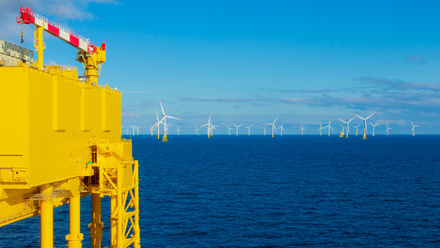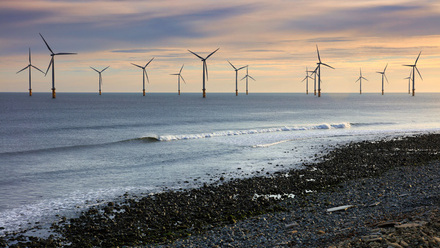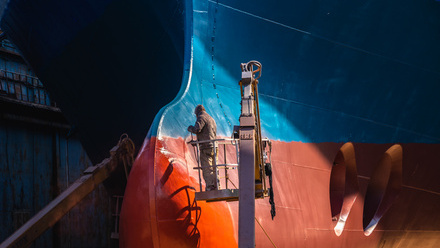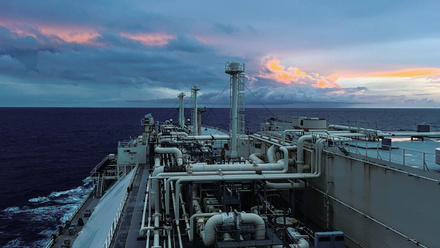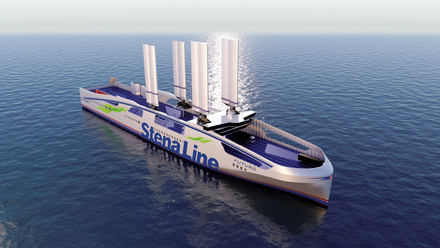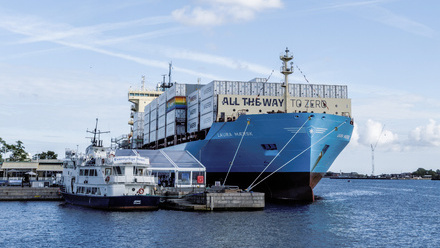What’s next for biofouling management?
As Glasgow readies for COP26, there’s increased impetus to decarbonise our world. For maritime industries, this work has been underway for some time but, as September’s 1st Global Conference on Biofouling Management for the Maritime Industries made clear, there’s much to do.
Co-chaired by John Lewis of Biofouling Management Services and Dr Bev Mackenzie of BIMCO, both leading members of the IMarEST Special Interest Group on biofouling, the conference pulled together industry experts, researchers, and PhD students from around the world.
Environmental and financial impacts
In a series of virtual presentations and lively Q&As, experts discussed how effective biofouling management can play an important role in reducing emissions from shipping, a problem that the IMO estimates accounts for 83 million tons of CO2 and 2 million tons of other GHG emissions every year, adding up to US$11 billion a year of excess fuel costs.
Biofouling management is also essential to reduce the transmission of invasive aquatic species (IAS), which causes huge economic and ecological damage. “There was an externalised cost of US$23 billion in 2020,” said Frank Stuer-Lauridsen of Denmark’s Litehauz, adding that this burden was only increasing with an IAS introduction rate of one every eight days. “That’s definitely unhealthy.”
Given the costs of biofouling, there’s a healthy market in solutions. Carl Barnes, head of marine consulting at Safinah Group, pointed out that there’s a market of more than 500 different anti-fouling products, with new ones being added every year. “It’s a highly fragmented market,” he said. “And it can be difficult for people to understand this huge portfolio and select the right product for their needs.”
Some products are now under scrutiny around their own environmental impact. Neal Blossom of American Chemet Corporation looked at the environmental impact of copper biocides, which account for around 90% of the commercial market, compared to biocide-free solutions such as silicone, about 10% of the market, and hard coatings, such as ceramics, which are less than 1%
“It’s a balance,” said Blossom, “between the impact of biocides leaching from the coating and affecting non-target organisms and the environmental cost of using less-effective coatings, which can then lead to increased energy use and the transfer of alien species.”
Ultimately, he said, the industry needs a broad efficacy coating to handle multiple biofouling species across diverse marine ecosystems. “There’s an environmental cost to vessel travel and for any coating,” said Blossom, stressing that copper has passed risk assessments around the world and, if managed correctly, is proven to be safe and effective. “Minimising that environmental cost is the goal of any hull coating.”
Innovative solutions
Innovations are coming thick and fast, from the use of UV light, which Kelli Hunsucker from the University of Florida’s Center for Corrosion and Biofouling Control, discussed in a presentation about the impact of turbidity on the effectiveness of UVC, to the role of AI and autonomous vehicles to provide pro-active in-water cleaning.
Tom Evensen, Regional Category Manager for Hull Performance, WESCA at Jotun, gave a fascinating talk to highlight his company’s HullSkater technology, which pre-empts the build-up of damaging and costly hull fouling. “It’s like brushing your teeth,” he said.
The company has developed a proprietary fouling prediction algorithm, which draws on 8.2 billion records from 80,000 vessels as well as external oceanographic and sailing data to determine when a vessel should undertake pre-emptive hull cleaning. “It includes a feedback loop so the algorithm is self-learning, and its accuracy is increasing every day,” said Evensen.
When the algorithm predicts the need for pro-active cleaning, the operator can put the autonomous HullSkater to work, which can cover 10,000 sq m of underwater hull area in less than an hour with its soft brushes removing whatever biofilm is there. Evensen said that while an average bulk carrier would lose 5.9% speed loss over time due to biofouling, the HullSkater reduces that to no more than 0.5%.
Return on investment
“Over 60 months, the average bulk carrier using HullSkater would see an overall fuel cost saving of US$2.8 million and 13.8% lower CO2 emissions,” said Evensen, highlighting a net RoI (return on investment) of US$1.9 million.
While there’s external market pressure to find innovative and effective solutions for hull biofouling, there’s less focus on build-up in niche areas which, said Monja Dauskardt of Germany’s Ankron Water Services, create perfect conditions for IAS to “stowaway and travel thousands of miles from ocean to ocean”.
This is a major concern, agreed Frank Stuer-Lauridsen of Denmark’s Litehauz, who pointed out it’s likely to be a focus for regulators in the future. “There’s a risk of a technology gap due to the lack of incentives for niche area innovation,” he warned.

Amy McLellan is a freelance journalist and author and former editor of Energy Day.

